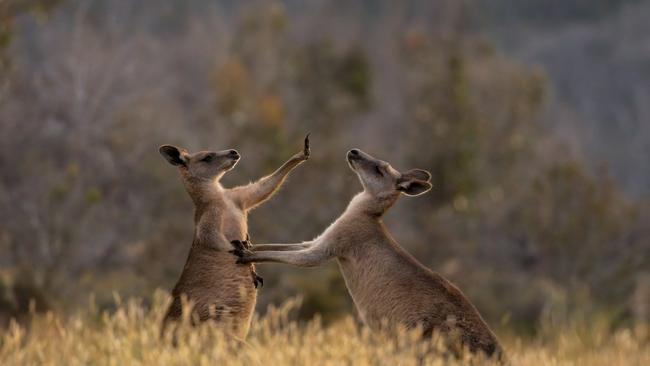The time has come for Treasury, APRA, and the banks to take a serious look at Natural Capital Buffers

As political, business and environmental leaders from across the world gather in Sydney this week for the inaugural Global Nature Positive Summit, we are standing on a similar global threshold when it comes to the decline and collapse of nature, ecosystems and biodiversity.
Over the past 100 years, Australia has experienced the highest decline in biodiversity of any continent and boasts the modern world’s highest extinction rate.
Preventing this catastrophe is vital for basic human reasons but also because it threatens to devastate the global economy. Roughly half of Australia’s economy is moderately to highly dependent on nature, a figure that is also true of the global economy. When forests fall, water sources are polluted, soil quality is degraded and populations of insect pollinators plummet, companies and economies that rely on these things for their prosperity suffer also.
The economy is reliant on healthy ecosystem services as inputs in economic production. For example, pollination underpins the agricultural industry as an ecosystem service. Should pollinators suffer a significant reduction due to habitat loss, there could be potential impacts on agricultural yields, potentially leading to challenges in food prices and an increased risk of bank defaults.
Recent landmark legal opinions in Australia and England found that company directors could potentially breach their duties by failing to consider or act on these types of nature-related risks.

Time is running out to slow and reverse the decline of nature, a task that comes with an estimated global price tag of some $US1 trillion.
There is an overwhelming funding shortfall, which requires bold solutions that synthesise economics, finance, and the natural environment.
We can see the size of the problem and the devastating cost of failing to act. What’s needed is fresh thinking about how we might finance meaningful action.
Globally we’ve seen the emergence of various instruments that tie finance to nature, each of which has potential benefits and limitations. We see emerging nature markets that will attempt to price nature and incentivise its protection. Large-scale debt-for-nature swaps have been recently completed providing funding to developing nations for the conservation of critical biodiversity regions. The development of these instruments has come alongside an increased recognition of the benefits and need for indigenous management of nature across the globe.
But there’s another way we can put in place a bold but achievable change that would be instrumental in driving finance towards meeting the nature challenge.
Natural Capital Buffers would require banks to secure and maintain a stipulated amount of natural capital in proportion to their environmentally risk-weighted assets. The policy not only mitigates the systemic risk associated with nature degradation but also provides the investment essential for nature restoration. It can be understood as an elegant answer to the current question: When setting up nature markets what will the incentive be for purchasing nature credits, beyond the limited pool of corporate altruism?
Conventional capital buffers (under the Basel III framework) mitigate systemic risk by preventing a banking collapse, requiring financial institutions to hold sufficient capital to cover unforeseen losses. NCBs would mitigate systemic risk by preventing the collapse of nature.
They would do this by increasing the resilience of banks to nature-related transitional and physical shocks. The instrument would be separated into a static equity ratio, where banks would maintain a minimum ratio of natural capital to risk weighted assets, and an additional systemic natural capital ratio, that fluctuates based on the state of nature degradation and plays a preventive role aimed at avoiding the excessive build-up of systemic risk over time.
In layman’s terms this would mean banks would be required to reserve money towards the conservation of nature, based on the extent of their risk exposure to natural systems collapse.
Such a change would be bold but achievable. In Australia, for example, APRA could require banks to hold NCBs, since neither risk mitigation nor conventional capital buffers insulate banks’ exposure to the systemic risk of nature collapse.
The interconnectivity of the financial system can easily lead to contagion when one institution’s exposure spills over to the next. This risk is particularly acute within Australia with four banks holding the majority of market share.
It will not work to provide only half the solution. Aversion to lending and divestment via risk mitigation without nature investment could compound nature risk by eroding crediting and liquidity conditions. Risk mitigation alone does not provide the investment required to restore nature and therefore reduce the related system risk. Without investment in nature to support the provision of healthy ecosystem services banks will remain exposed to risk from nature collapse.
During Covid and the GFC we saw the mandate and policy toolkit of prudential and monetary authorities understandably expanded under the justification of a societal emergency.
The most recent revision of planetary boundaries shows that the earth has far exceeded its capacity for biosphere change. In the coming half decade, it is likely that this overextension will manifest itself materially within society, the economy, and the financial system.
The time has come for Treasury, APRA, and the banks to take a serious look at Natural Capital Buffers as an important part of the solution set.
Martijn Wilder is co-founder and CEO of specialist climate and nature investment and advisory firm Pollination. Andrew McConnell is a Pollination Associate Director specialising in climate finance, sustainable monetary policy, and macroeconomics.



In times of crisis, it has long been possible for our banking and finance system to make dramatic adjustments that would previously have been considered impossible. We saw this during the global financial crisis and again during the coronavirus pandemic – a sense of imminent jeopardy focused and enabled a response designed to prevent untold damage.